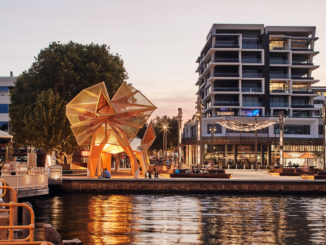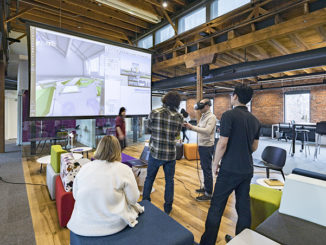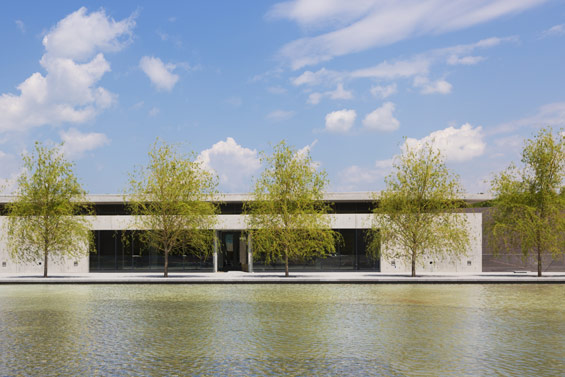
The Clark Art Institute is in its final phase of a transformational campus expansion program that adds new facilities to support the growth of museum and academic programs, enhances the visitor experience, improves circulation throughout the campus, and creates new levels of sustainability across its 140 acres. The program focuses on providing superior facilities for the benefit of visitors and scholars and underscores the Clark’s environmental stewardship of its grounds.
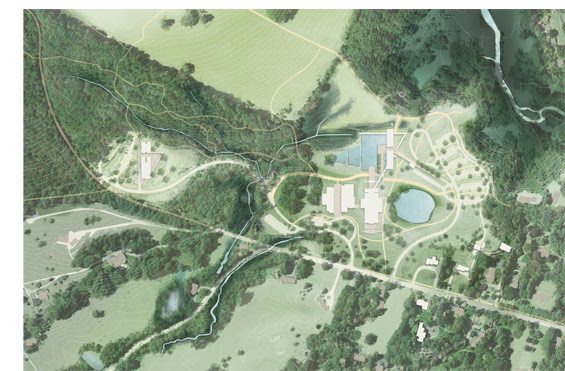
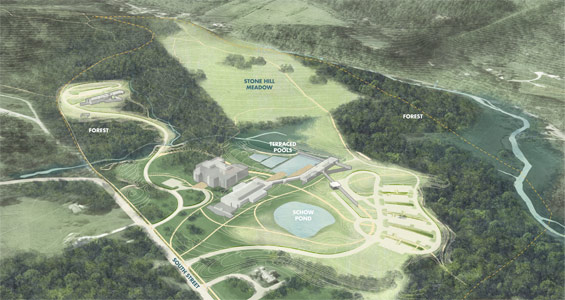
The project was initiated in 2001 after the creation of a master plan by Cooper, Robertson & Partners that reconceived the campus. The Clark’s entire 140-acre campus is renewed and enhanced by the introduction of four miles of new walking trails, five new pedestrian bridges, and more than a thousand new trees. But the focal point of the landscape is a set of tiered reflecting pools. Reed Hilderbrand Landscape Architecture designed the pools, with their cascades, lawn embankments, and stepping stones to knit together the architectural refinement of the inner campus with the pastoral sweep of Stone Hill Meadow and the meander of Christmas Brook and its wetlands. In order to meet the environmental and experiential goals of the Clark and the community, the pools needed to fit into the site’s topography, hydrology, and habitat.
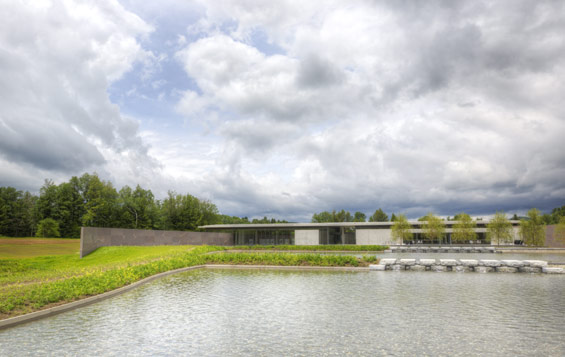
Conceived by architect Tadao Ando as a unifying element for the campus and its surroundings, the pools orchestrate a unified composition among the diverse architectural characters of the Clark Center, the Museum Building, the Manton Research Center, and the varied landscape beyond. The Clark Center terraces overlook the uppermost pool, which reflects views of wetlands and woodland beyond as visitors arrive. The entirety of the pools links the cultivated lawns of the central campus with the pastures of the Stone Hill meadow and the intricate network of streams that define the site’s drainage systems and shape its habitat. Lawn walks and embankments thread between the pools. Water cascades through granite weirs from one pool to the next and then is recycled through a system that integrates rainfall capture, stormwater management, landscape irrigation, and building systems, including climate control and toilet flushing.
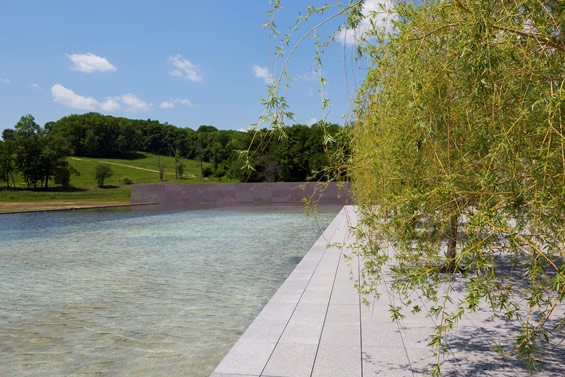
The water management system designed for the Clark, prominently represented by the tiered pools, was conceived to reduce total water consumption for the expanded campus through the interconnection of landscape and building water sources. This system transforms what would have been considered wastewater into a resource; balances the need to rebuild groundwater through infiltration on site with the desire to offset potable water use in the building; and improves the health and performance of surrounding wetlands and streams through careful mitigation of storm events and runoff. Original modeling of total water savings, based on a first design study, forecast no potable water consumption in the landscape. As-built performance modeling is forthcoming. The Clark has also elected to commission the entire landscape, as one does for building mechanical systems, to enhance and evaluate the performance of all of its landscape features and assets and to provide a model for future projects.
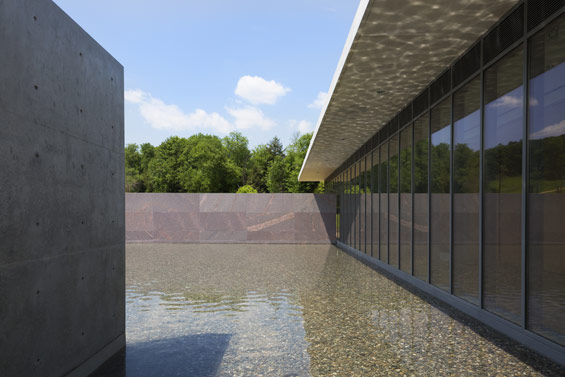
Through intense collaboration, the design team created an integrated hydrological system that links all of the campus buildings to the reflecting pool and landscape. Using various harvesting techniques (drains, pipes) and storage techniques (reservoirs, tanks), the system collects foundation water, as well as rainwater, and funnels it into the reflecting pool. Collected water is also used for irrigation, plumbing (gray water for the toilets), and for makeup water for the cooling tower.
Key Landscape Features
- Operational volume for reflecting pools is 284,000 gallons of water over an area of 42,000 square feet (approximately 1 acre) at an average depth of 13 inches
- 2000 gallons of water flow through the pools each minute
- Schow Pond area enhanced and views from galleries improved
- 500 trees added in final phase; 1150 new trees planted overall
- Upgrades and extensions to 4 miles of walking trails, including 5 pedestrian bridges
- Landscaped parking for 398, including 154 overflow meadow spaces and 69 porous asphalt spaces
- Invasive plant species removed
- 1.5 miles of new drives built since 2005
- 80 acres of the campus maintained as woodland
- 49 acres of the campus managed as native meadow
- 15 acres of the campus protected as wetland and waterway
- 10 meadow rain gardens capture and treat runoff
Clark Art Institute Expansion Landscape | Williamstown, USA | Reed Hilderbrand
Museum Leadership
Peter Willmott, Chairman, Board of Trustees
Michael Conforti, Director
Design Team
Tadao Ando Architect & Associates, Osaka, Japan
(Clark Center, Lunder Center at Stone Hill, physical plant)
Selldorf Architects, New York, New York
(Museum Building and Manton Research Center)
Reed Hilderbrand Landscape Architecture, Cambridge, Massachusetts
(Campus Landscape, Circulation, Tiered Reflecting Pool)
Gensler, New York, New York, Executive Architect and Sustainability Consultant
Key Dates
Groundbreaking March 2006 (project launch at the Lunder Center at Stone Hill)
Opening Date The Museum Building and the Clark Center open July 4, 2014; the Manton Research Center opening will be celebrated in spring 2015


